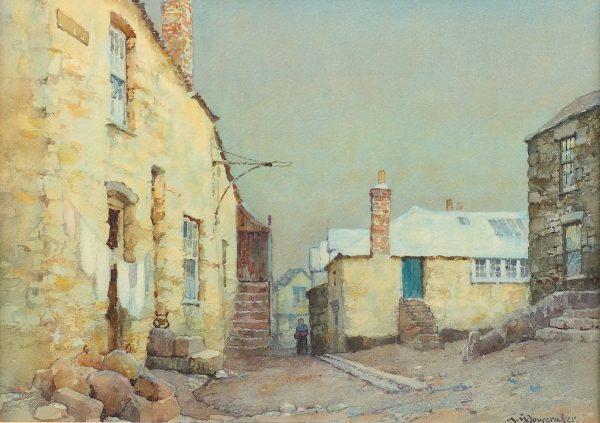Albert Moulton Foweraker was born on 7th July, 1873 at Exeter, the only son of the Rev. Edmund Thomas Foweraker and Emma Susanna, his wife. The Rev. E.T.Foweraker, who had been priested in 1867 and was Curate of St. Mary Major, Exeter from 1864 to 1879, was at the time of the birth of his son, also Deputy Priest Vicar at Exeter Cathedral, becoming Priest Vicar in 1878. He was Headmaster of Exeter Cathedral School from 1856 to 1888, became Chaplain of the City of Exeter Asylum in 1889, was Sub-Librarian of the Cathedral from 1895 to 1913, when he became Librarian, and was made Dean’s Vicar in 1909.
Albert was educated at Exeter Cathedral School, was an exhibitioner at Cavendish College, Cambridge in 1890, and went on to Christ’s College, from where he obtained his Degree in Applied Science in 1893.
In ‘Who’s Who’ his recreations were listed as acting and music. He also rowed in the College Boat and played tennis.
He obtained First Class Honours, City & Guilds in 1896, and was a qualified Milling Engineer. He was also Sometime Demonstrator In Science at Exeter Technical College.
After an accident that resulted in the loss of three fingers, he engaged in journalistic work for technical and trade papers.
He was married in July 1897 to Annie Triphina Coles, and they had one daughter, Marie Catherine.
In 1898, Albert took up Art professionally, and between that year and 1912, he exhibited his work regularly. He was made a member of the Royal Society of British Artists in 1902, and sent 52 paintings to Exhibitions at their Galleries in Pall Mall during these years. He also exhibited at several important provincial galleries, as detailed in the attached list. (this will be added to the page soon!)
He originated an Exhibition of works by modern Painters at Exeter, which developed into the ‘Devon And Cornwall Fine Art Society’.
He moved from Exeter to Lelant, Cornwall in 1902, and travelled frequently to Spain, especially the South during the early 1900’s and in the 1920’s. He also visited Southern France and North Africa, and produced many paintings from these travels.
He was also a very prolific local artist, and painted a very large number of landscapes and local scenes from Devon, Cornwall and of course, Dorset, to which County he moved in the mid 1920’s, living at Northbrook Road, Swanage for many years.
He seems to have been fascinated by the effects of certain light on the landscape, particularly ‘Moonlight’, as his paintings show. He is known for his use of the colour blue, and his Moonlight paintings of people carrying lanterns and light shining from windows are much sought after!
He appears to have been very interested in the Titanic disaster of 1912, particularly in the Enquiries subsequently held, apparently suspecting suppression of certain information. In 1940 he made a Codicil to his Will, leaving various documents and papers relating to these matters, to the British Museum.
The artist died in January 1942 at Swanage, at the age of 68, and is buried in Godlingston Cemetery, Ulwell, Swanage.
–Ancellon Hughes

